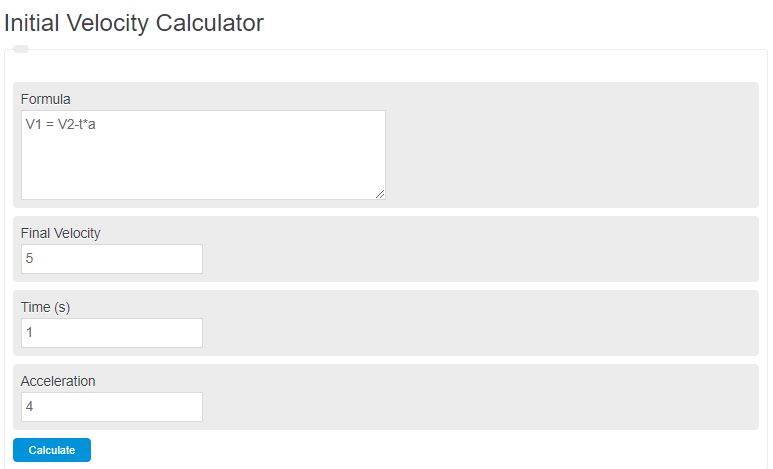Enter the final velocity, total time, and acceleration into the calculator to determine the initial velocity of an object.
- All Velocity Calculators
- Velocity Calculator
- Instantaneous Velocity Calculator
- Linear Speed Calculator
- Final Velocity Calculator
- Acceleration Calculator
- Average Velocity Calculator
- Initial Vertical Velocity Calculator
Initial Velocity Formula
The following equation is used to calculate the initial velocity of an object.
V1 = V2-t*a
- Where V1 is the initial velocity
- V2 is the final velocity
- t is the time
- a is the acceleration
To calculate the initial velocity, subtract the product of the time and acceleration from the final velocity.
Initial Velocity Definition
An initial velocity is defined as the measure of the initial speed of an accelerating object.
Initial Velocity Example
The following example review how to used the above equation to determine initial velocity.
- First, measure the final velocity of the object.
- Next, determine the total time that has passed.
- Next, determine the acceleration acting on the object during that time period.
- Finally, plug those three values into the formula above to get initial velocity.
For example, given V2=5, a = 2, t =2, solving: V1 = 5-2*2 = 5-1 = 1.
FAQ
What is initial velocity?
Initial velocity is a movement an object has at the start of an observance period in which an acceleration starts to act on the object.

